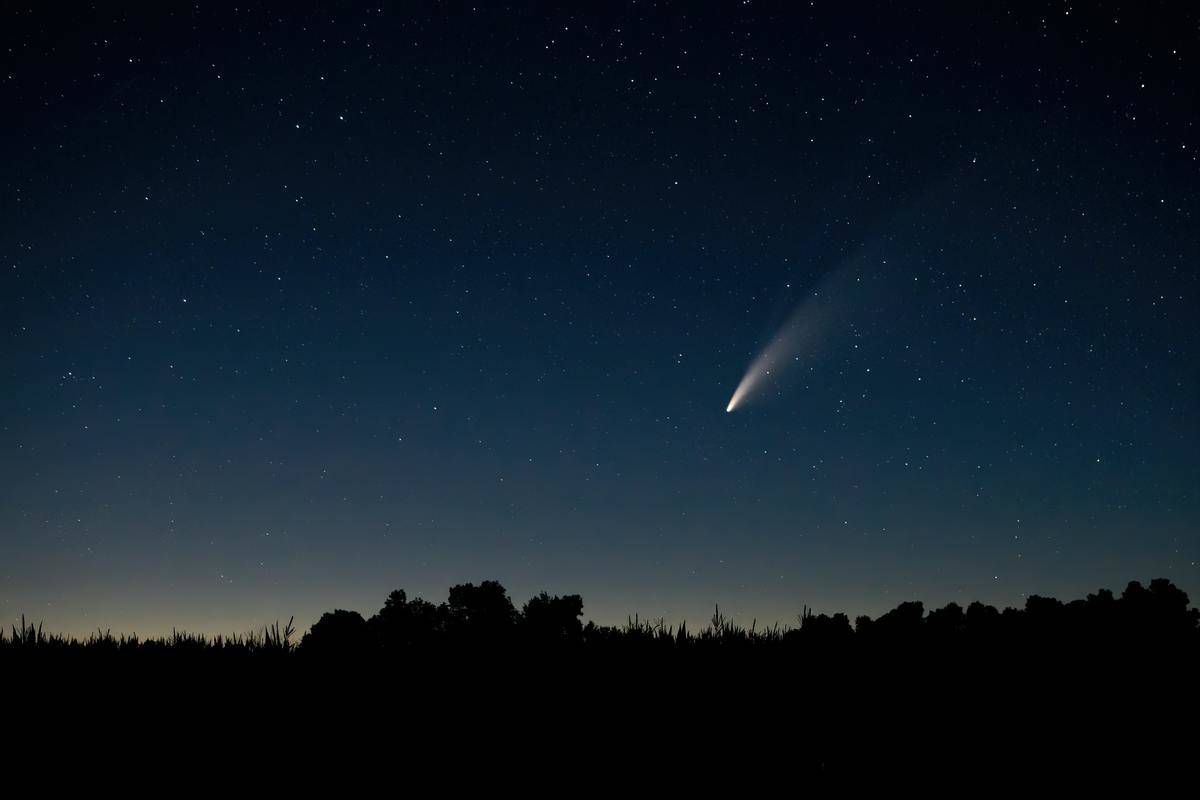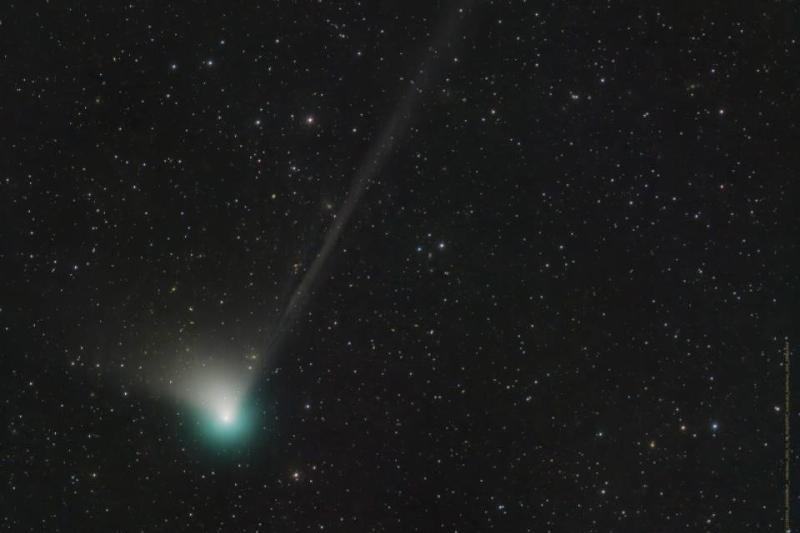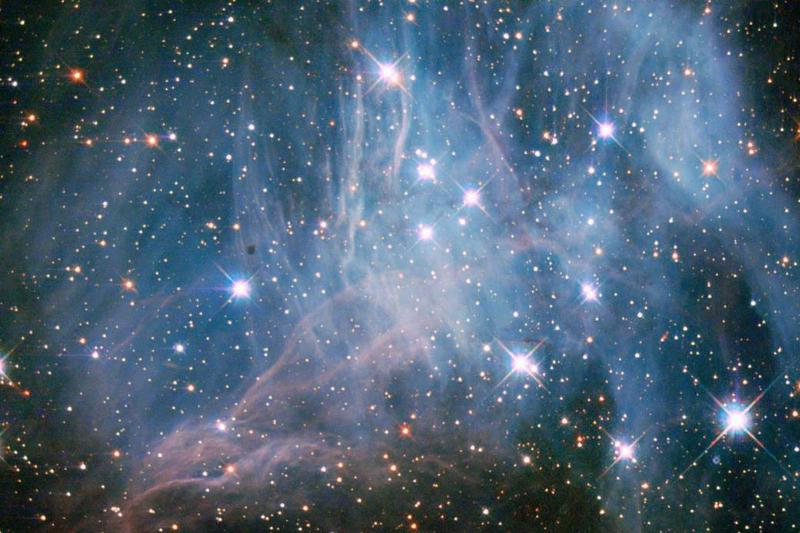Once-In-A-Lifetime Green Comet Makes Closest Approach To Earth In 50,000 Years
We're in for a special treat as the end of the month approaches, and February can be seen over the horizon. If you look to the skies in the early morning (hopefully with some binoculars or a telescope—you might catch a glimpse of a comet blasting through the sky as it passes by our planet.
That comet last came near Earth before we had the tech to look at it closely—before astronomy was even a concept. In fact, the last time it was here, we weren't even fully developed humans. This sighting will be once-in-a-lifetime, so be sure to keep your eyes peeled.
We may not understand all the secrets that the universe or the stars hold, but are you interested in learning more about the secrets of your dreams? Tap into the 4,000-year-old science of Numerological Analysis with a FREE Numerology video report!
That's right, the numerology of your birth date, regardless of your Zodiac sign, can help you discover detailed information about who you truly are and what is hiding in your subconscious. You won't believe how accurate it is!
Click HERE to learn what Numerology says about your life using only your Birth Date.
Every So Often

Every year, roughly ten comets of note pass by Earth. Not all of them are visible to those of us without high-powered telescopes, and some are rather common sights by now, sailing past on a schedule so regular we can predict it time and time again.
But sometimes, a truly special comet returns to us after a long, long time spent soaring through our solar system, meaning we get an exceptionally rare glimpse at an ancient heavenly body.
A New Discovery

In early 2022, astronomers discovered a new, huge comet which they named C/2022 E3.
Though the comet—made entirely of ice—is new to us, it's been pretty close to Earth before. Researchers estimate that the last time it passed so close to our home planet was during the Stone Age, now 50,000 year ago, when Neanderthals were the ones populating the Earth.
When C/2022 E3 was discovered by the Zwicky Transient Facility on Palomar Mountain in California, it was in Jupiter's orbit.
It's Finally Making A Return
On February 2nd, the comet will be the closest it's been to Earth since the Upper Paleolithic era, though it will still be 26 million miles away. That's almost 109 times the distance of the moon, but due to the comet's bright green trail, it might still be visible in the night sky.
As NASA wrote in an update, "Comets are notoriously unpredictable, but if this one continues its current trend in brightness, it'll be easy to spot with binoculars, and it's just possible it could become visible to the unaided eye under dark skies."
How To Spot It

In the Northern Hemisphere, the comet should be visible just before dawn throughout late January and early February. It may need a telescope to be seen for the first few days, but as it gets closer, binoculars should do just fine. It will be in the northwestern sky.
"The new long-period comet has brightened substantially and is now sweeping across the northern constellation Corona Borealis in predawn skies," NASA wrote when the comet's trajectory was first calculated.
The best day to look for it will likely be January 21st, as the sky will also be sporting a completely darkened new moon.
Green With Envy
As mentioned, C/2022 E3 has a shimmering green tail that will help watchers distinguish it from the many other stars in the sky. As NASA described it, the comet has a "greenish coma, short broad dust tail, and long faint ion tail."
Many comets create a greenish glow around them as they soar through space. Research has shown this is due to a reactive molecule called dicarbon, present around many comets. Dicarbon is constantly being decayed by the sun's light, thus creating a reaction that emits a green hue.
Where It Came From

Experts spoke to USA Today about the comet's origins, saying it likely came from the Oort Cloud, the farthest region of our solar system.
NASA has described the distant region as a "big, thick-walled bubble made of icy pieces of space debris the sizes of mountains and sometimes larger."
They also describe the cloud as encircling our solar system like a "giant spherical shell," and it's so far away that astronomers can only describe its distance in astronomical units (AU). One AU is the distance between the Earth and the sun, which is 93 million miles. The inner edge of the Oort Cloud is between 2000-5000 AUs away from us.
The Comet's Return
Just as it took 50,000 years for C/2022 E3 to return to Earth, it's likely going to take around another 50,000 for it to circle back once again, meaning this is a once-in-a-lifetime chance at seeing this celestial body.
Jessica Lee, an astronomer at Royal Observatory Greenwich, told Newsweek, "We don't have an estimate for the furthest it will get from the Earth yet—estimates vary—but if it does return it won't be for at least 50,000 years."
If It Returns At All
Speculation points to this comet never coming close to Earth again. As Lee explains, "Some predictions suggest that the orbit of this comet is so eccentric it's no longer in an orbit—so it's not going to return at all and will just keep going."
So, if you can, it's most certainly worth trying to catch a glimpse of this comet before it potentially leaves us forever, continuing its own journey through the stars. In fact, some believe it will gain enough energy to leave our solar system entirely, thus setting sail for new horizons.
Stargazing

A moment like this doesn't happen often, so if you're able to, try looking skyward later this month to see if you can spot this magical comet!
Though comets aren't particularly rare, seeing one that comes around so infrequently certainly is, and rarely do we who don't work in the field of space exploration get to witness something as stunning as this firsthand. Watching that comet fly by, knowing the last time it saw us was before we were even fully developed as people and how much history it's missed? That's something special.
All In Perspective

Though it's been literal ages for us, the past 50,000 years have likely only been a blip in this comet's life. Of course, it doesn't have consciousness, it's merely a ball of ice hurtling through space, but can you imagine the knowledge it could impart if it did? The stories it could tell of other planets it has passed, how close it's come to the birth of a star, watching moons and systems spin and crash and fall.
Thinking about all that a simple comet has seen reminds us how our lives are so small in comparison. Blissfully, wonderfully, magically small, but still filled with so much human joy. Just something to remember as we spectate the comet's flight past us...a hello and a goodbye until the next 50,000 years pass.





